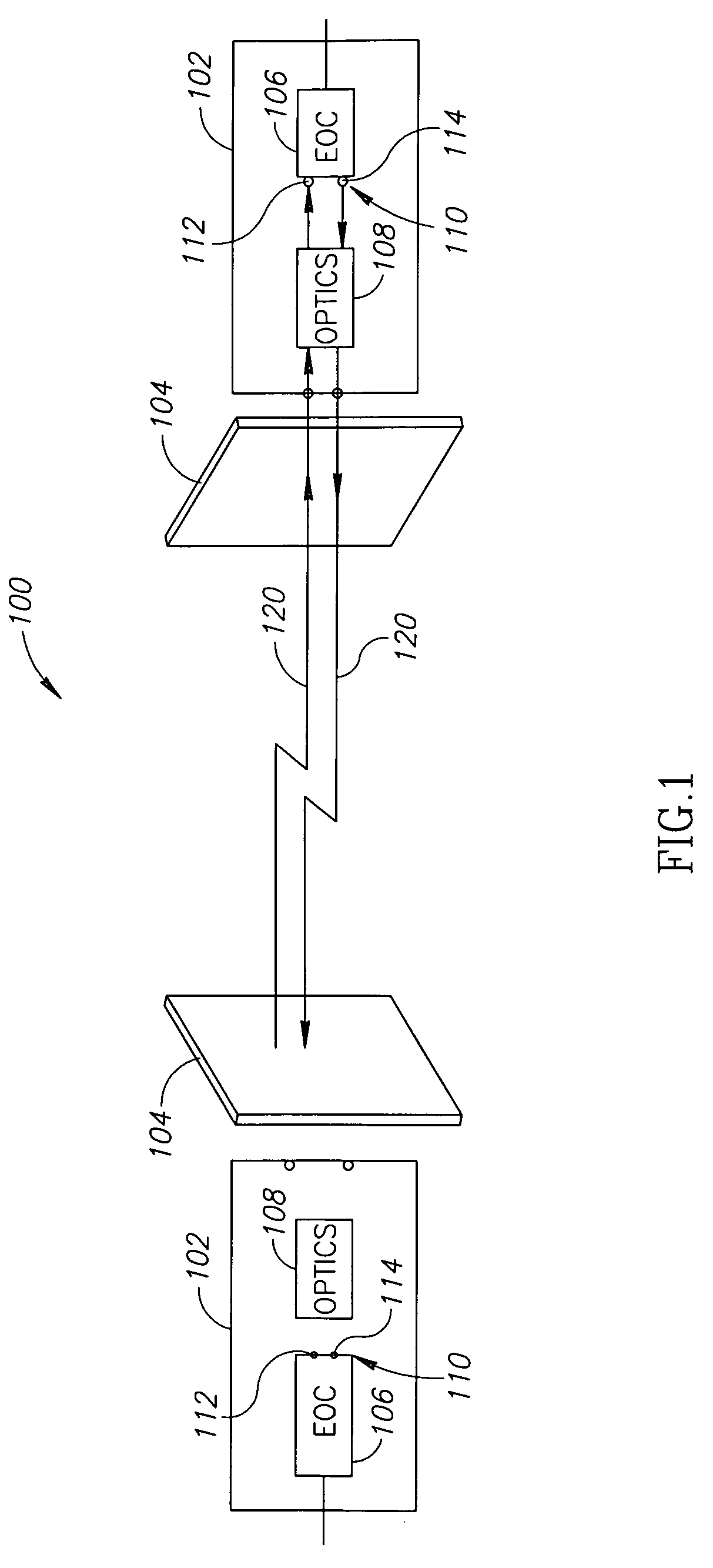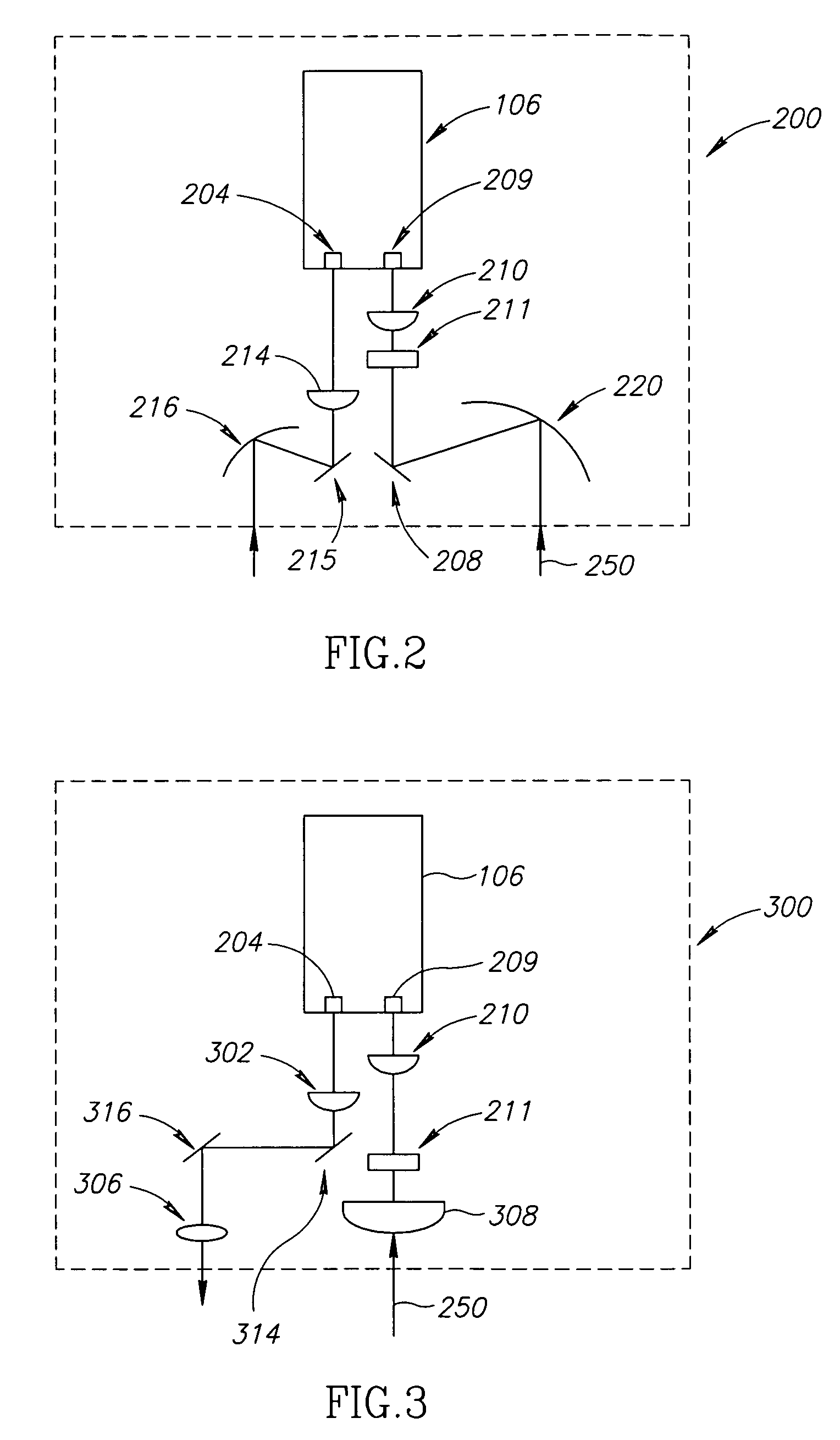Miniature optical free space transceivers
a free space transceiver and miniature technology, applied in the field of free space optical communication, can solve the problems of difficult to overcome the technical difficulties of free space optical transceivers, the scattered light beam emitted from the transmitters, and the general cost of laying optical fibers in dense metropolitan areas, so as to achieve the effect of outweighing optical costs
- Summary
- Abstract
- Description
- Claims
- Application Information
AI Technical Summary
Benefits of technology
Problems solved by technology
Method used
Image
Examples
Embodiment Construction
[0035]FIG. 1 is a schematic illustration of an optical free-space transmission system 100, in accordance with an exemplary embodiment of the present invention. System 100 comprises a pair of optical data transceivers 102, positioned in line of sight with each other. Transceivers 102 are optionally mounted on respective windows 104 in adjacent or otherwise neighboring buildings. Each of transceivers 102 transmits a modulated light beam 120, which carries data, to the other transceiver. Light beams 120 are substantially parallel so that the transceivers are easily aligned relative to each other for both transmission and reception. Transmitted and received light beams 120 may include light of the same wavelength or of different wavelengths. Each transceiver 102 optionally includes an electro-optical conversion unit (EOC) 106, adapted to generate a modulated light beam from a first electrical signal and to convert a modulated light beam into a second electrical signal, as described belo...
PUM
 Login to View More
Login to View More Abstract
Description
Claims
Application Information
 Login to View More
Login to View More - R&D
- Intellectual Property
- Life Sciences
- Materials
- Tech Scout
- Unparalleled Data Quality
- Higher Quality Content
- 60% Fewer Hallucinations
Browse by: Latest US Patents, China's latest patents, Technical Efficacy Thesaurus, Application Domain, Technology Topic, Popular Technical Reports.
© 2025 PatSnap. All rights reserved.Legal|Privacy policy|Modern Slavery Act Transparency Statement|Sitemap|About US| Contact US: help@patsnap.com



